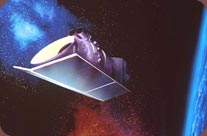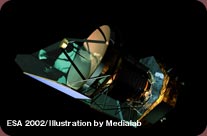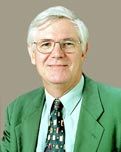|
 |
 |
 |
 |
 |
|



I think everybody in the astronomical community is very excited by the idea of an All Sky Survey. I think this will have a big impact. Obviously we are hoping that the launch goes well and that, once in orbit, the Akari (ASTRO-F) and instruments work well.
 |
|
|


My interest is in using the All Sky Survey to map the galaxy distribution out to a distance of several billion light years. This is something I did with an earlier American mission called IRAS. Akari is much better at producing this kind of map.
Also, Akari can cover the wavelength range that the European Infrared Space Observatory, ISO, and the American Spitzer mission had difficulties with. It is a difficult range to observe and also to make instruments for. We will wait to see how well Akari works, and I hope that we will have an excellent All Sky Survey. In the mid-infrared, the main strength of the Japanese instrument is that it has many wavebands covering the whole wavelength range. That is a weakness of NASA's Spitzer mission, that it does not have enough wavebands. On the other hand, I suspect that it will be difficult for Akari to match the sensitivity of Spitzer. Therefore, with unique differentiation, Akari and Spitzer are complementary.
This is a slightly anxious time for everybody. If you have worked on space missions in the past, you know that it is wise to keep a little calm until you are sure that everything is definitely working.
|
|
|
|
|


I had heard about Akari and was very interested in it. The collaboration started when I became aware that data processing was an issue for Akari. I contacted a scientist in Japan, and in 2000 we met at a conference of the International Astronomical Union, in Manchester. After more official meetings, we drew up a letter of agreement between the U.K. group and the Japanese, which the Dutch group later joined.
There are two aspects of European involvement in Akari. There is a consortium of British and Dutch astronomers who are helping with the data processing pipeline. We had the experience of working on the data processing with the European Infrared Space Observatory, and so we have been working with Japanese scientists for some years now on developing the software for Akari. They welcomed our experience, as they were short of manpower in the area. Another aspect of this is that we are able to work on the survey data for our own various science programs. We are very excited about this, and are really looking forward to seeing the data.
Our plans are bound up with ESA. The next mission, due for launch in 2008, is the infrared astronomical satellite Herschel. The telescope is 3.5 meters, which is the largest infrared space telescope, four times larger than Akari and Spitzer. It operates from a wavelength of 60 to 670 microns. This is a very big project.
I think it's very exciting the way that Japanese astrophysics and space science are developing, and therefore it's very interesting to collaborate with them. There are many excellent scientists there, and they also have, of course, the Subaru Telescope in Hawaii. So I think it's a very exciting time for Japanese astrophysics.
|
|


ISO (1995)

ESA's next-generation infrared space telescope, Herschel |
|
|
 |
 |
Michael Rowan-Robinson
Professor, Imperial College London
Representative of the British/Dutch Collaborative Research Group for Akari (ASTRO-F)
After receiving a doctorate in 1969, Dr. Rowan-Robinson worked as an Assistant Lecturer at Queen Mary College. He focused on astrophysics, and became a full professor in 1987. Since 1993, Dr. Rowan-Robinson has been Head of Astrophysics at Imperial College London. He has been involved with IRAS since 1977, and with ISO as one of its chief scientists. He is a committee member of ESA's scientific missions and of the Hubble Space Telescope project. As a Chief Scientist, he is playing a key role in ESA's next-generation infrared space telescope, Herschel. He is the author of over 160 research papers, and many books.
|
|
|
|
|
|

